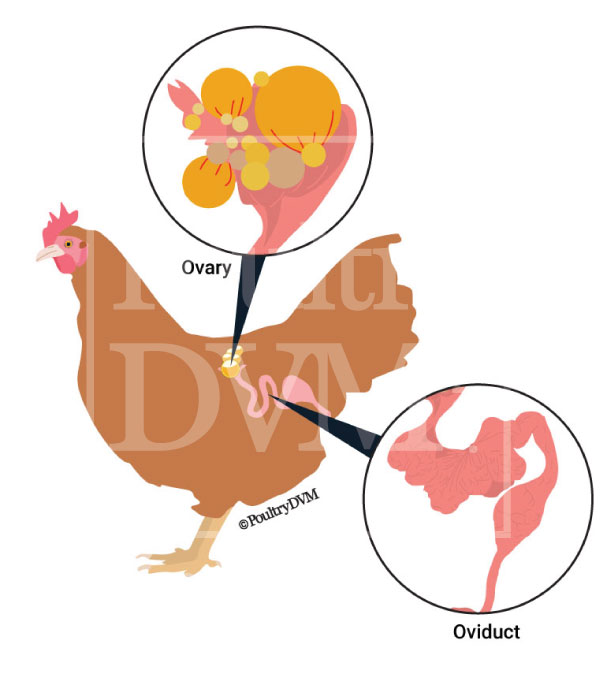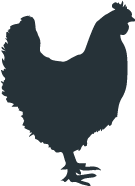Veterinary advice should be sought from your local veterinarian before applying any treatment or vaccine. Not sure who to use? Look up veterinarians who specialize in poultry using our directory listing. Find me a Vet

| Name | Summary | |
|---|---|---|
| Supportive care | Isolate the bird from the flock and place in a safe, comfortable, warm location (your own chicken "intensive care unit") with easy access to water and food. Limit stress. Call your veterinarian. | |
| Hormone implants | Suprelorin®, Virbac is used off-label to stop ovulation (egg production) in hens. | |
| Surgery | Salpingohysterectomy (surgical removal of the oviduct). This is a high risk surgery. | |
| Flaxseed | 10% flaxseed supplemented to the daily diet may help decrease the severity. | K Ansenberger et al., 2010 |
| Curcumin (Curcuma longa) | 12 months of dietary curcmin intake at 26 or 53 mg/day led to marked dose-dependent reductions (about 31% and 57%, respectively) in ovarian cancer (serous and mucinous) incidence in hens. Daily curcumin intake also resulted in tumors that were markedly smaller than those hens who did not receive curcumin in their diet. | K Sahin et al., 2018 |
| Aspirin | Supplemented as 0.1% overall diet, may inhibit the progression of ovarian cancer. | M.E.Urick et al, 2009 |
| Lycopene | Supplemental lycopene given at 200-400 mg/kg per day significantly reduced the overall ovarian tumor incidence (P < 0.01) as well as the number and the size of the tumors (P < 0.004 and P < 0.005, respectively). Lycopene also significantly decreased the rate of adenocarcinoma, including serous and mucinous subtypes (P < 0.006) | K Sahin et al., 2018; E Yilmaz et al., 2020 |
| Ginger (Zingiber officinale) | J Rhode et al., 2007 discovered that ginger inhibits growth and modulates secretion of angiogenic factors in ovarian cancer cells, and could potentially aid in the treatment and prevention of ovarian cancer. Ginger has also been studied for it's use as an antioxidant in chickens, when given as 5 g/kg of diet per day. | J Rhode et al., 2007; G Zhang et al., 2009; C Wen et al., 2019; A Akbarian et al., 2011; X Zhao et al., 2011 |
| Genistein (Genista tinctoria) | F Erten et al., 2021 found that when laying hens were given 400-800 mg/kg of genistein per day, it exhibited an anticancer effect by reducing pro-inflammatory biomarkers levels and inhibiting GSK-3 expression in the ovaries of old laying hens. It acts in a dose-dependent manner. | F Erten et al., 2021 |

© 2026 PoultryDVM All Rights Reserved.